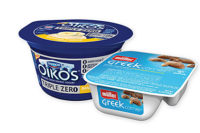Over the last decade or so, the United States has become a major dairy exporter of dried milk, cheese and dried whey. The U.S. Dairy Export Council reports that the value of U.S. dairy exports reached record levels in 2012 topping $5.2 billion, a gain of 8% over the previous year.
Historically, the United States was a net importer of cheese, but in the last few years we have become a net cheese exporter. Key markets for U.S. cheese include Mexico, Asia (South Korea and Japan), the Middle East/North Africa and Canada.
Despite the growth, there are still many opportunities as well as challenges for U.S. cheese exports. U.S. manufacturers cannot assume that the same cheese that they successfully sell here will be what a foreign consumer will purchase and enjoy.
Understanding what the consumers desire and expect in each export market is important, as there may be variation in likes and dislikes even within a region. For example, the South Korean consumers are quite different from Chinese consumers in their preferences regarding taste, texture and the color of cheese on a pizza. Also, some consumers may have limited experience with cheese while others may be well-versed. For example, in Latin America where Hispanic-style cheeses are a key part of the culture and cuisine, consumers have significant experience consuming cheese while most Chinese consumers have probably never tasted natural cheese other than mozzarella.
The Wisconsin Center for Dairy Research has partnered with USDEC to assist in this area by providing technical assistance on cheese properties as well as education to overseas buyers.
Research and restrictions
Regulatory issues and product specifications can also pose a challenge to the U.S. cheese industry. Many countries do not follow the U.S. definitions for specific cheese varieties. This can create a particular challenge when attempting to market or distribute a cheese under a specific or common name. Determining proper definitions and related market restrictions can be difficult, but partners such as USDEC, and state programs such as the Wisconsin Department of Agriculture, Trade and Consumer Protection, can offer assistance in this area.
More general market research and background information on major U.S. export countries is also available from these partners. In terms of permitted ingredients, many countries have strict rules regarding the use of colors, stabilizers, preservatives and other such additives, so be sure to research the regulations before attempting to export. Microbiological standards, especially spore formers, may also be an issue for some export products since many countries outside of the U.S. require regular monitoring of these types of microorganisms.
There are also challenges related to distribution. In particular, an unreliable chilled storage and distribution system, and limited shelf-space for dairy products, make it quite difficult to introduce a new cheese to some foreign marketplaces.
CDR is exploring ways to help with this issue and extend the shelf-life of a product. In these markets, exporting a process cheese product, cheese powder, sauce or spread may be a more favorable option. There is also a significant opportunity for the export of Cheddar or American-style cheeses to be used by process cheese manufacturers in these overseas markets.
While there are many technical challenges to consider when exporting a cheese product, there are also many opportunities. The global growth in popularity of products such as cheeseburgers and pizza, and the rise of global food chains (like Pizza Hut and McDonalds) are driving cheese growth around the world.
Areas with a growing middle class and a younger population are becoming more receptive to cheese. The industry should be concentrating on the development of creative, ethnic-flavored and nutritious options for export to these areas.
Consumer needs and preferences play a major role in this area of research as studies show that in regards to pizza, some regions prefer a yellow tinted cheese while others prefer white. Additionally, some regions prefer a dark browning cheese with many blisters while others prefer a light golden pizza. In any event, it will be important to understand these preferences and develop a consistently performing product that can meet the growing need.
Cheese exports are increasing but we have considerable scope to further increase exports in the coming years. If we take the time to better understand these markets and possible opportunities then the U.S. can easily grow to become one of the world’s major cheese exporters.




